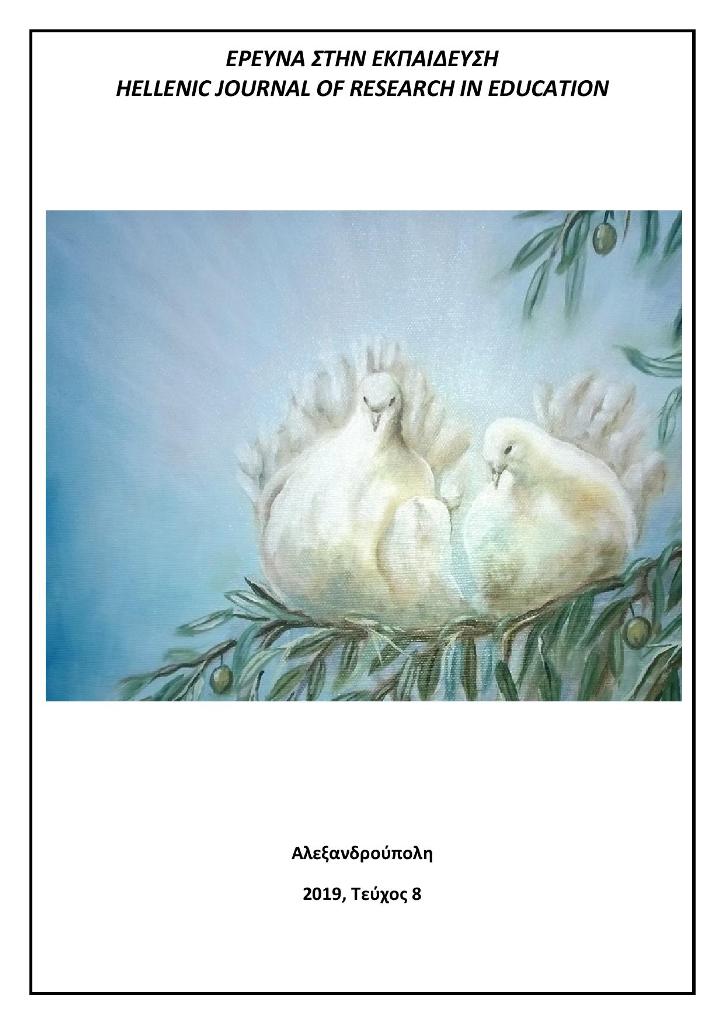Η αντιμεταθετική ιδιότητα ως μέσο ενίσχυσης των νοερών υπολογισμών πρόσθεσης των μικρών παιδιών

Περίληψη
Σκοπός της παρούσας εργασίας είναι να εξετάσει αφενός τη χρήση της αντιμεταθετικής ιδιότητας από μικρά παιδιά και αφετέρου τη σύνδεσή της με την εκτέλεση νοερών υπολογισμών. Για τον σκοπό αυτό, πραγματοποιήθηκε έρευνα στην οποία συμμετείχαν συνολικά 100 παιδιά, ισάριθμα προερχόμενα από τη Β΄ τάξη και τη Γ΄ τάξη του δημοτικού σχολείου. Σχεδιάστηκαν και παρουσιάστηκαν τέσσερα έργα τα οποία περιλάμβαναν: α) αθροίσματα στη δεκάδα, β) αθροίσματα στα διπλά, γ) αθροίσματα ελέγχου, και δ) ισοδυναμίες. Εκτός από το τρίτο έργο, τα άλλα έργα ευνοούσαν τη χρήση της αντιμεταθετικής ιδιότητας σε προσθέσεις. Τα αποτελέσματα έδειξαν ότι συνολικά η επίδοση των παιδιών ήταν πολύ καλή (82%), χωρίς σημαντικές διαφορές αναφορικά με την ηλικία. Οι περισσότεροι μαθητές χρησιμοποίησαν τη στρατηγική της αντιμεταθετικής ιδιότητας στις πράξεις που την ευνοούσαν, καθώς και περισσότερο στις πράξεις με μεγάλους αριθμητικά προσθετέους. Για την εκτέλεση των πράξεων η πλειοψηφία των συμμετεχόντων, κυρίως από τη Β΄ τάξη, έκαναν χρήση των νοερών υπολογισμών, ενώ λίγοι ήταν εκείνοι που χρειάστηκαν χαρτί και μολύβι.
Λεπτομέρειες άρθρου
- Πώς να δημιουργήσετε Αναφορές
-
Δεσλή (Desli) Δ. (Despina), & Αγγέλη Χ.-Ε. (2019). Η αντιμεταθετική ιδιότητα ως μέσο ενίσχυσης των νοερών υπολογισμών πρόσθεσης των μικρών παιδιών. Έρευνα στην Εκπαίδευση, 8(1), 63–76. https://doi.org/10.12681/hjre.20055
- Τεύχος
- Τόμ. 8 Αρ. 1 (2019)
- Ενότητα
- Άρθρα

Αυτή η εργασία είναι αδειοδοτημένη υπό το CC Αναφορά Δημιουργού – Μη Εμπορική Χρήση – Παρόμοια Διανομή 4.0.
Τα πνευματικά δικαιώματα των άρθρων του περιοδικού ανήκουν στους συγγραφείς. Τα άρθρα διατίθενται με άδειες Creative Commons CC-BC-SA 4.0


